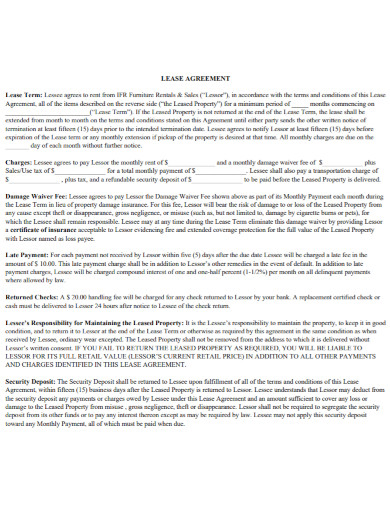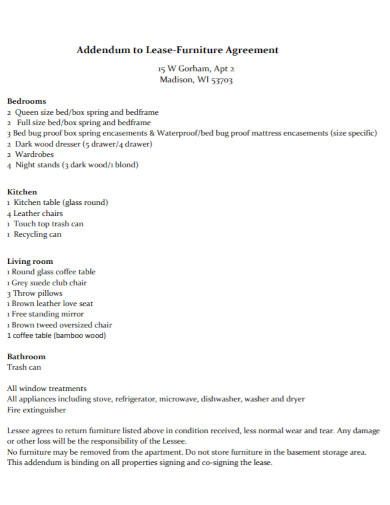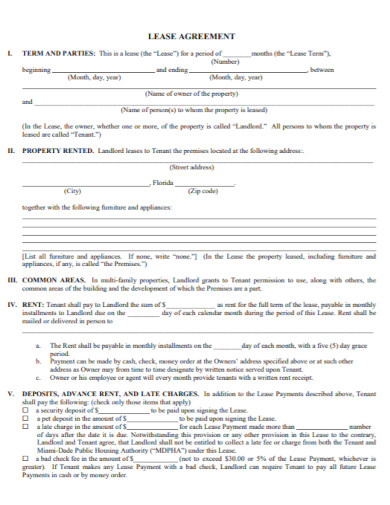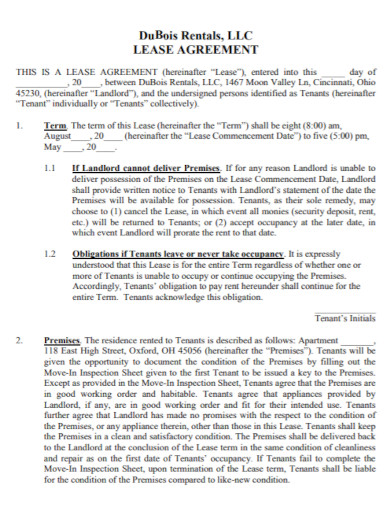4+ Furniture Lease Agreement Examples
Running a business is never an easy task. Let alone if you are handling a lending or a lease kind of business. There are times that even with the strictest of policies, customers would find a loophole to get what they may want and to not let the leasing company expect them to return it in good order. However, this is not always the case. Businesses who lease items know that there is both a positive and a negative side to this kind of work. Leasing items to potential clients in the hopes of these said clients handling the items they have leased to good use and care. However, some are not as lucky as others, even if the client in question promised to care for the item they have leased. To avoid these kinds of problems, making a lease agreement would be helpful and would also be favorable for the business and for their clients. How do you do a furniture lease agreement? What should be placed in this kind of agreement? You may also be wondering what use is this agreement for your business. To know more about it, check out the article below.
4+ Furniture Lease Agreement Examples
1. Furniture Lease Agreement Template
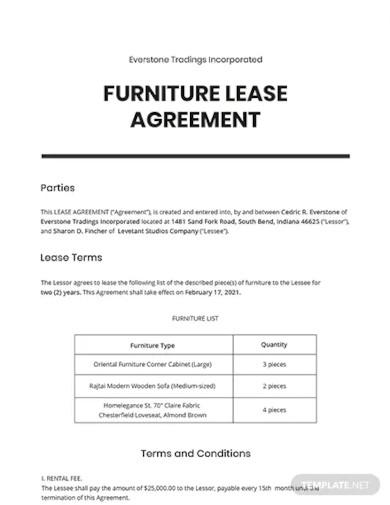
2. Furniture Rentals & Sales Lease Agreement
3. Addendum to Lease Furniture Agreement
4. Basic Furniture Lease Agreement
5. Formal Furniture Lease Agreement
What Is a Furniture Lease Agreement?
Like any other lease agreement, may it be a home lease agreement, a car rental agreement, a furniture lease agreement focuses mainly on the leasing of an item, in this case furniture. Businesses who deal with leasing any kind of furniture to their customers use this kind of lease agreement. It focuses on both parties agreeing to certain terms and conditions, rules for the client about leasing the item, the time frame for leasing, payment and the fine if the lease expires. In addition to that, it also focuses on the item, the descriptions that are highlighted in the agreement and the notice that the item must be in good condition once the lease expires. Business owners use this kind of lease agreement to make sure that the client understands that leasing something always comes with a price and an agreement. Basically on both parties.
The purpose of a furniture lease agreement is to make sure that both the client and the lessor can agree to terms that would benefit both of them. By doing this, it also protects the lessor from what the client may do if they break the agreement set up by both of them through common ground. In addition to that, a furniture lease agreement handles the terms and conditions of the agreement and to make it clear for the tenant the rules that they need to follow to lease the item in question.
How to Write a Furniture Lease Agreement?
Planning on leasing some items in your business? Trying so hard to make a clear and has all the coverage covered furniture lease agreement? Thinking it’s better to wing it than to make a solid, clear, precise lease agreement? If you said yes to all three questions and more, then you are currently in search of ways to write your next furniture lease agreement. You are in luck, as these are some tips or guidelines you can check out when you are planning on your next best furniture lease agreement.
1. Date of Agreement
When you begin your lease agreement, always remember to add the date of agreement. This is very important in any kind of agreement. As this can also be of use for you if your client breaks the agreement and may result in consequences. The date of agreement must be when you and your client have agreed fully on the rules and not during the time of the discussion, but not the agreement.
2. Name of Lessor and Client
Another thing to consider is the complete name of your client as well as yourself. Complete names must be written or typed and in bold. If possible, clarify with your client about their names, to lessen any erasures or corrections. Since this document is a legal document, avoid any erasures. It is best to ask for their full name with the correct spelling.
3. Terms and Conditions
The terms and conditions you are going to be writing down must be fair, clear and concise. Your client would want to know about the terms and conditions, so you must be prepared in answering them. If you think the terms and conditions are too unfair or your client may think they are too unfair, discuss with them all the terms and conditions and the reason for them. Find a common ground between both parties.
4. List of Furniture to Be Rented
Some furniture agreements would list down the furniture that would be rented out, while others do not. This would of course depend on you as the lessor. Depending on what the client or the tenant asked for furniture to be leased out, you may or may not add a list to your agreement. Of course, some may want to make it as clear as possible about the items that are part of the lease, while others trust their tenants. It is basically a matter of preference.
5. Duplicate Copies
Having duplicate copies makes it less problematic for you and your client or tenant. One copy is for you, the exact copy of the agreement, and the other copy is for your tenant. That way, in case of any complaints on the side of your client, the both of you can find a way to agree with the solution, all the while without breaking the original agreement.
FAQs
What is a furniture lease agreement?
A furniture lease agreement is a legal document that consists of the list of items that may be rented out, the terms and conditions, the rules and the agreement between two parties.
Why is it necessary to have a furniture lease agreement?
Any kind of lease agreement should need the legal document. This is to protect both parties from any issues that may come.
What are the things to avoid when writing your agreement?
The things you should avoid when writing the agreement are unclear words, difficult jargon, erasures and the terms and conditions in your agreement are not stated or are difficult to manage.
Lending or leasing out furniture to potential tenants is not an easy task to begin with. Let alone having to trust someone of your own stuff and expect them to take good care of it. To be assured of the quality and the care they would show to your items, it is always best to write down an agreement. The agreement you are making has to be made clear that you expect the items being leased to be in the same order as you leased them. In addition to that, you must make sure that what you have written down in your agreement should be fair for both parties.



